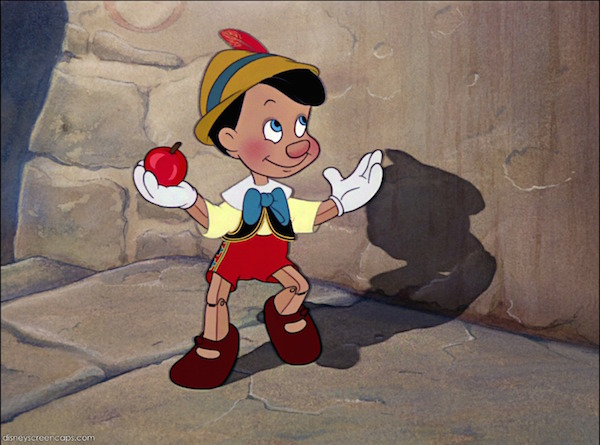One of the most recognizable stories on the planet, and certainly in Italian history, is the story of Pinocchio by Carlo Collodi. It is one of the most re-used, re-purposed, revised, and re-distributed stories in modern history. The 1940 Disney version has a 100% rating on Rotten Tomatoes.
Transformation
At the heart of the story lies multiple stories of transformation;
- the transformation from a block of wood into a marionette
- the transformation from a marionette into a donkey into a boy
- the transformation from a mischief filled animated puppet into boy with feelings and emotions
- the transformation and struggle of a lonely and elderly man into a father
All around us, we hear of transformation; business transformation and digital transformation. We talk of more personalized experiences and deeper engagement. We talk of transitioning towards more agile, more responsive organizations. And it is the power of ubiquitous connectedness that is simultaneously demanding and enabling this agility and responsiveness.
The likely reason that the story of Pinocchio resonates so deeply is that it ties to core deeply human desires. The desire to create is as alive today as it was in 1883. What’s changed is what was once purely the well visioned and articulated fantasy of a 19th century Italian political satirist has now entered into the lexicon of reality.
Connection and Creation
Can we turn puppets into boys? No, but robots are reaching the point of being conversational and more lifelike. But, this post isn’t about creating little robots that emulate people.
It is, however, about highlighting that that ability to awaken and connect previously analog items to new and existing networks is transforming the world we live in, in unprecedented ways.
Homes and cities and thermostats and cars are being brought to life. Not only are mutli-billion dollar enterprises creating jet engines that communicate terabytes of data in real time, but consumers can buy a poker chip sized sensor device for under $25, or simply place a sticker on anything they want to allow it to sense and communicate.
Though we read ad nauseam about how these sensors are kicking off unprecedented amounts of (big) data, this is just an early result of new and immature capabilities being attached to refrigerators, light bulbs, and industrial manufacturing equipment.
Atoms and Bits. Bits and Atoms.
Instead of the block of wood that Pinocchio was carved from, imagine with me a 10 foot x 10 ft block of plastic. Break it apart into thousands of legos. The potential of what that original 10×10 block could become multiplies by millions (likely billions). Now imagine that each of those legos is connected to the Internet, can transmit and receive, and interact with anyone, or anything, anywhere, at any time.
The block of wood became an assemblage of moving arms, legs, body, and head. The block of plastic was broken into thousands of parts with no specific purpose, but with the ability to be used in several different ways. And if you extend the analogy beyond just blocks of wood and plastic, but out to anything and everything in the entire world, the number of possibilities of connection, reconfiguration… creation… rapidly extends exponentially.
In addition, can we also reverse the process of converting atoms to bits? 3D Printing takes bits and converts them to atoms. 3D printing is now being used to create food, chocolate, and even human tissue and organs.
The ability to take physical pieces and connect them – by converting and/or translating atoms to bits allows each item to connect to, and interact with, just about anything. Connecting these components, or building blocks, to a little code and processing power to direct the behaviors of these physical objects makes the idea of creating a Pinocchio attainable.
Geppetto 2.0 thinks beyond Marionettes
But, this isn’t about creating Pinocchio. The 2015 version of Geppetto thinks much bigger, and broader. He isn’t working from his framework as a woodworker. He’s working from his framework as a creator, as an innovator. He understands the growing ability to create just about anything. His problem is choosing what to make, how to make it, and what factors to use to guide his choice.
In Pinnochio, Geppetto brought a marionette to life. Today’s emerging technology allows anyone to bring just about anything to life; to connect, communicate, and create with them, having large implications for organizations and individuals.
It is an innovator’s playground, and I’m amazed (in many ways) everyday at what people are coming up with. Like, how about a belt that expands with your waistline throughout the day? I’m excited to see what the next Bill Gates, Elon Musk, Steve Jobs, and Peter Thiel will create.
So, if you were Geppetto, what would you create?
Check that. You ARE Geppetto 2.0. What will you create?
This post is brought to you by InnovateThink and Cisco.
IMG Credit: Wikimedia
